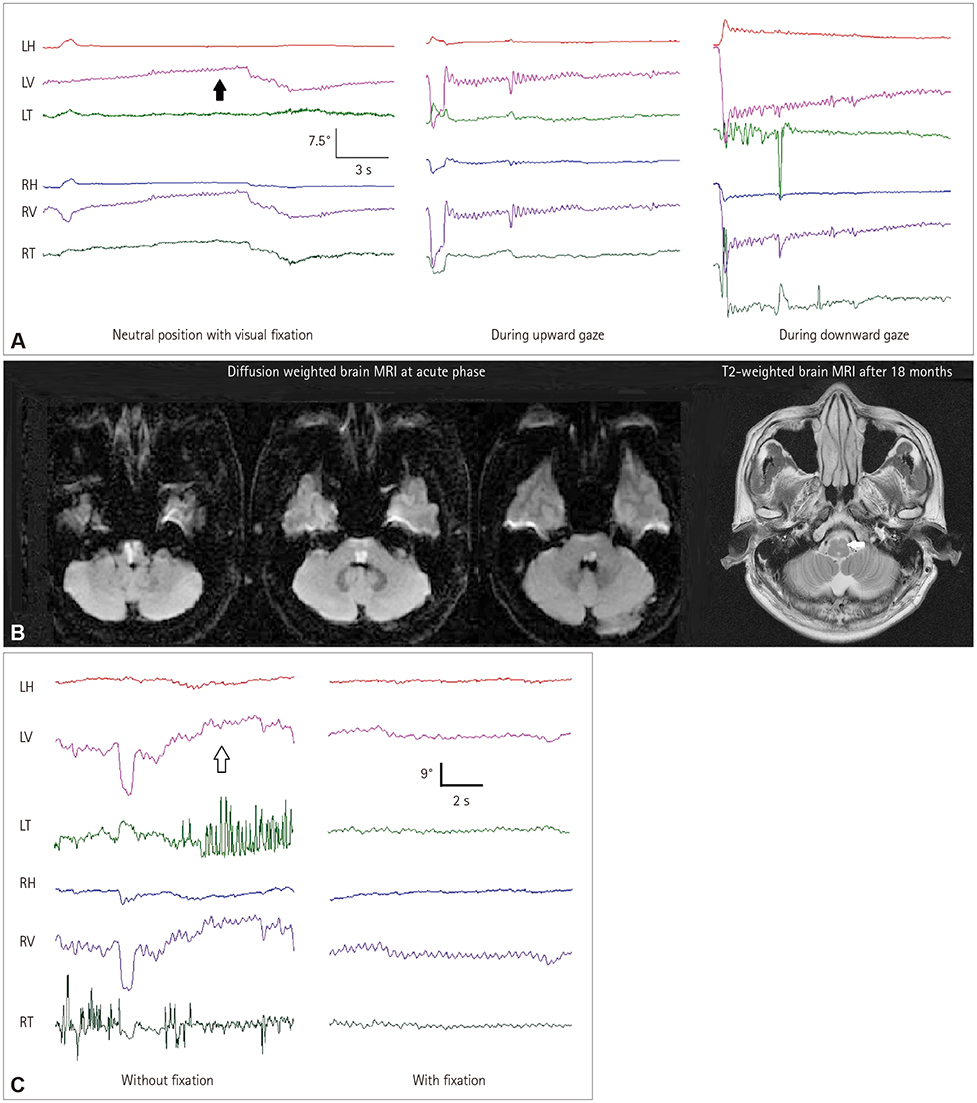J Clin Neurol.
2020 Jan;16(1):163-165. 10.3988/jcn.2020.16.1.163.
Acute Vertical Pendular Nystagmus and Delayed Oculopalatal Tremor in a Patient with Bilateral Horizontal Gaze Palsy
- Affiliations
-
- 1Department of Neurology, Keimyung University School of Medicine, Brain Research Institute, Daegu, Korea. kha0206@dsmc.or.kr
- KMID: 2467802
- DOI: http://doi.org/10.3988/jcn.2020.16.1.163
Abstract
- No abstract available.
Figure
Reference
-
1. Matsuo F, Ajax ET. Palatal myoclonus and denervation supersensitivity in the central nervous system. Ann Neurol. 1979; 5:72–78.
Article2. Kim JS, Moon SY, Choi KD, Kim JH, Sharpe JA. Patterns of ocular oscillation in oculopalatal tremor: imaging correlations. Neurology. 2007; 68:1128–1135.
Article3. Shaikh AG, Hong S, Liao K, Tian J, Solomon D, Zee DS, et al. Oculopalatal tremor explained by a model of inferior olivary hypertrophy and cerebellar plasticity. Brain. 2010; 133:923–940.
Article4. Leigh RJ, Zee DS. The neurology of eye movements. 5th ed. Oxford: Oxford University Press;2015.5. Glickstein M, Sultan F, Voogd J. Functional localization in the cerebellum. Cortex. 2011; 47:59–80.
Article6. Lee H, Yi HA, Kim HA. Do the paramedian tract neurons in pons take a role as a vertical neural integrator in humans? J Neurol Sci. 2012; 321:107–110.
Article7. Lawrence WH, Lightfoote WE. Continuous vertical pendular eye movements after brain-stem hemorrhage. Neurology. 1975; 25:896–898.
Article8. Keane JR. Acute vertical ocular myoclonus. Neurology. 1986; 36:86–89.
Article
- Full Text Links
- Actions
-
Cited
- CITED
-
- Close
- Share
- Similar articles
-
- 3-Dimensional Analyses of Eye Motion in Oculopalatal Tremor
- Acquired Pendular Nystagmus with Voluntary Inhibition
- A Case of Bilateral Horizontal Gaze Palsy due to Pontine Hemorrhage
- Lateral Medullary Infarction with Ipsilesional Gaze-Evoked and Head-Shaking Nystagmus
- A Case of Wernicke's Encephalopathy after Long-Term Intravenous Feeding


